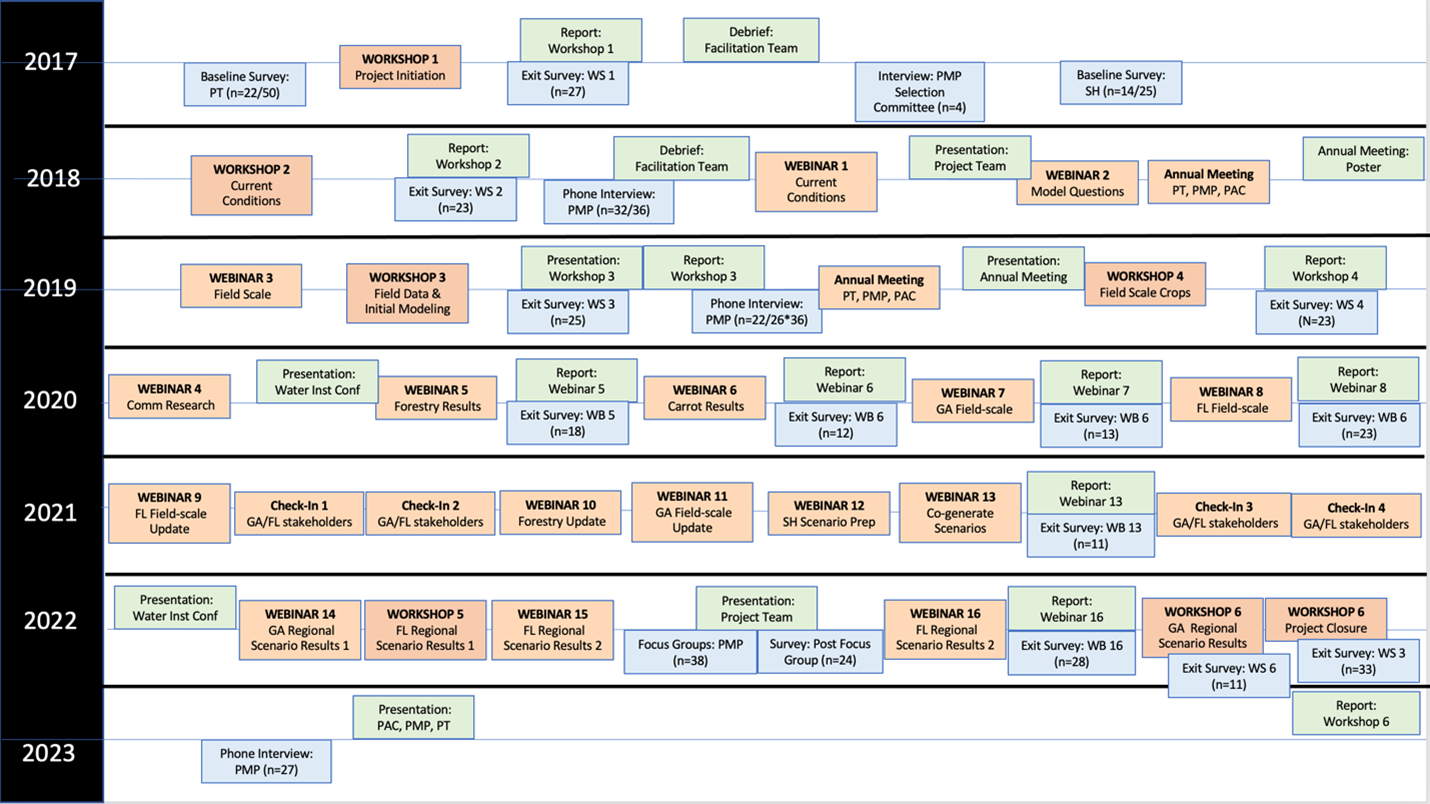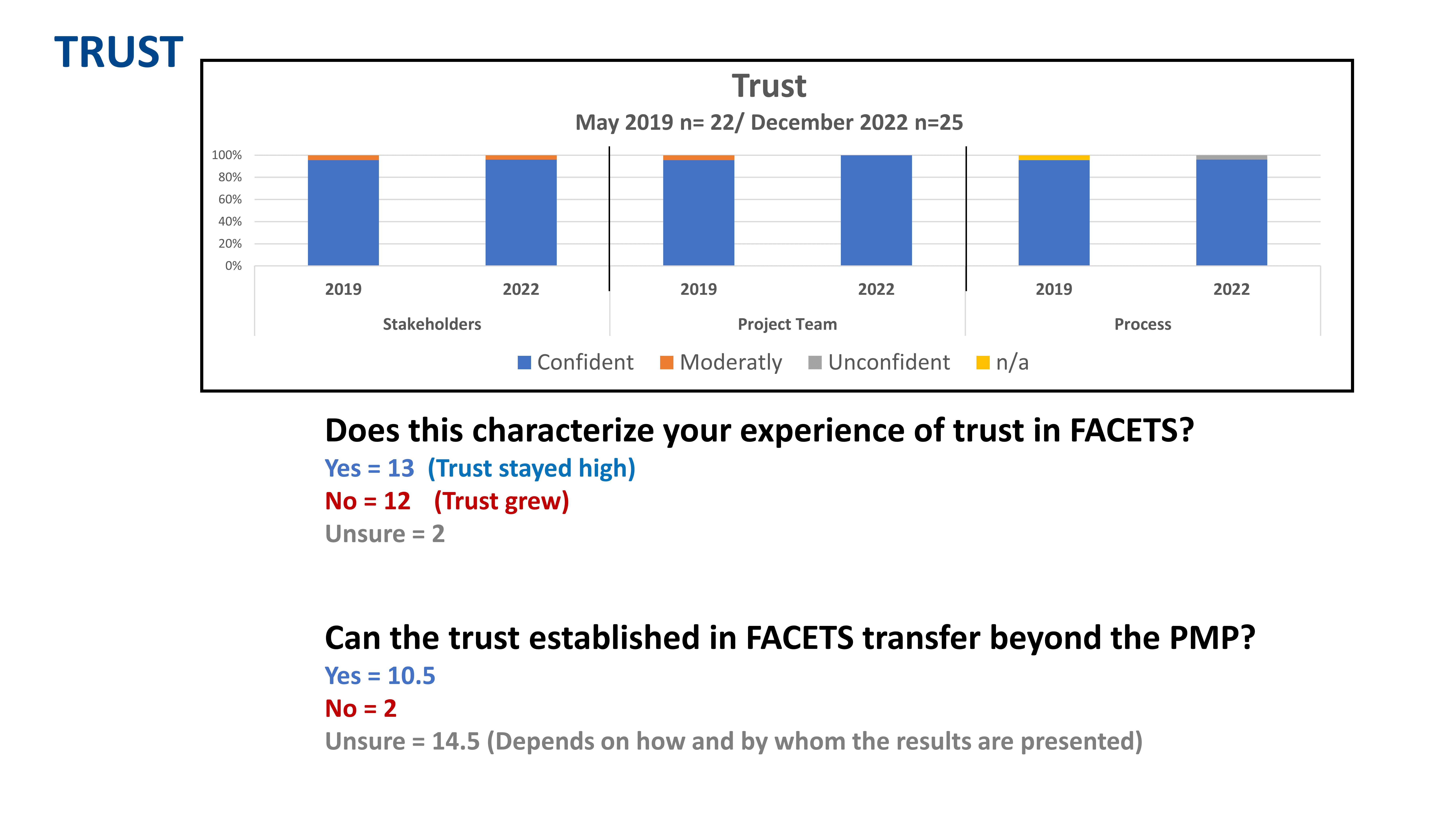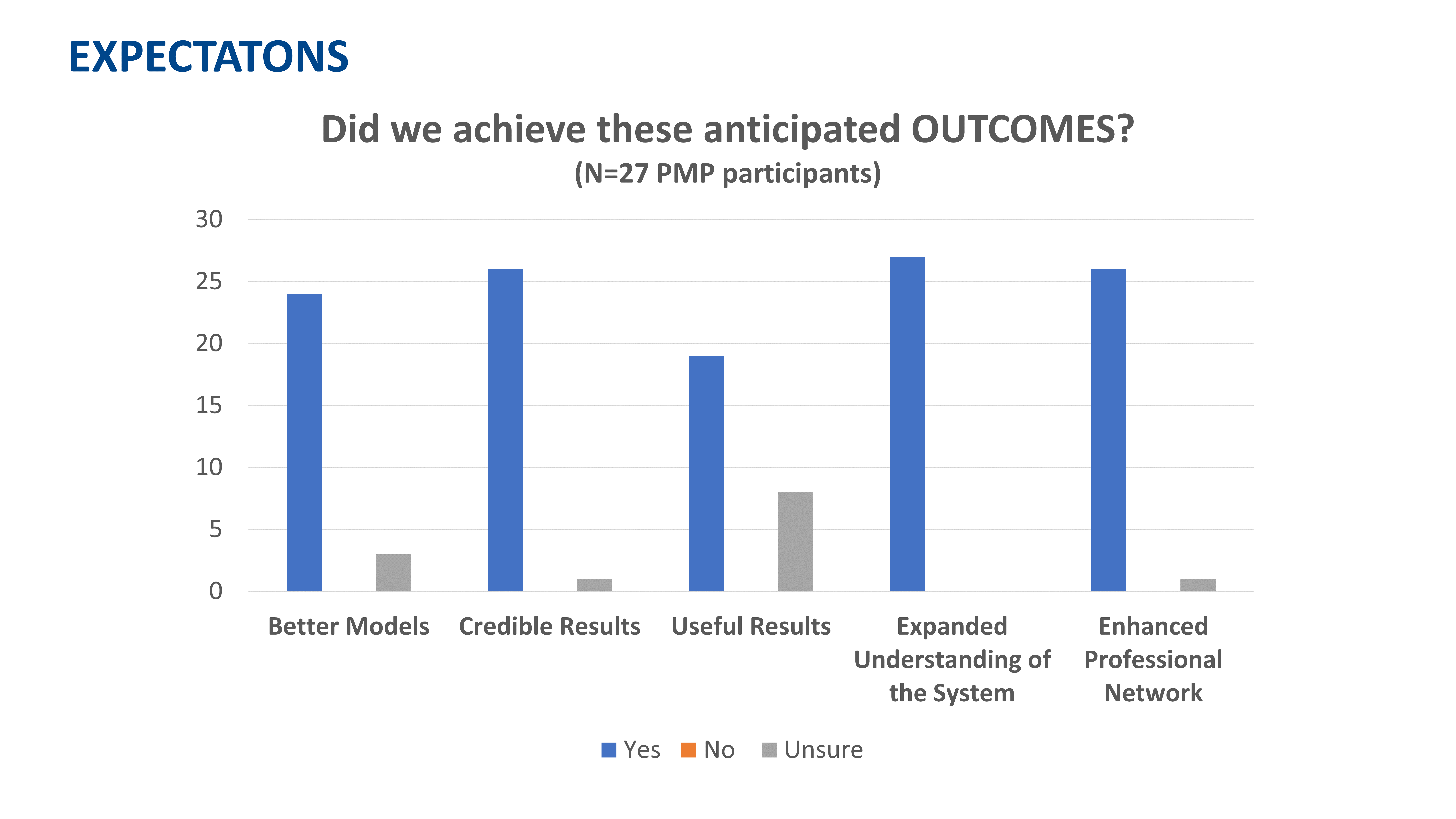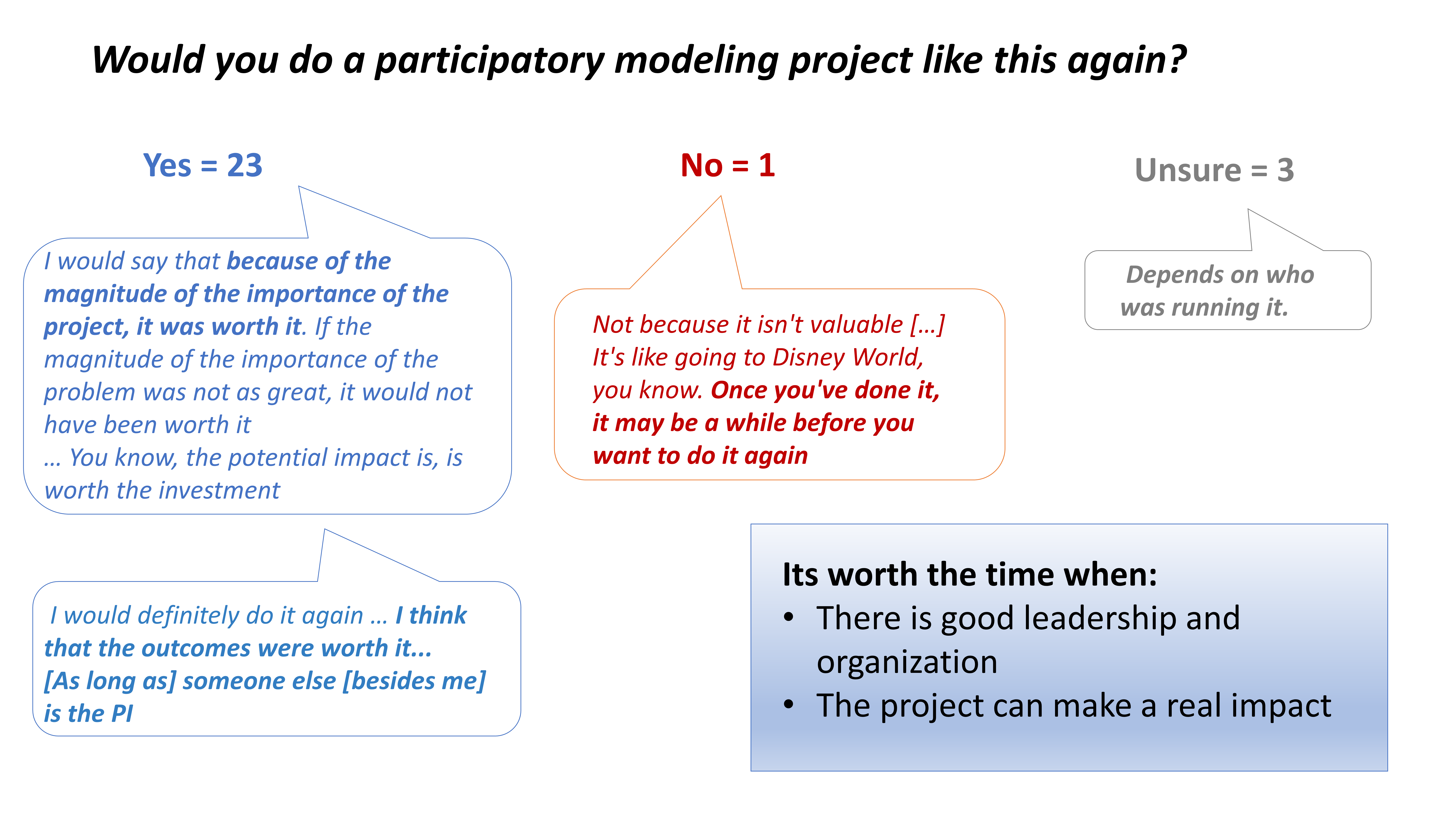Reflexive monitoring (RM) occurred throughout FACETS to help guide agendas and activities associated with the PMP. Interviews, surveys, and focus groups provided feedback on stakeholder and project team perspectives. Findings were used to better understand how participatory modeling works best. They were also used to adapt the design of subsequent workshops, webinars, and meetings. Questions explored network composition, the value of knowledge integration, barriers to co-production, preferences regarding scenario types; trust and satisfaction. Project participants noted that the PMP process yielded better models, credible and useful results, an expanded understanding of the system, and an enhanced professional network. Furthermore, they experienced trust in the process and its products throughout the project.
PMP Stakeholders were nominated by the Project Advisory Committee based on the geographic boundaries of the study region and to represent three key stakeholder interest groups: agriculture & forestry; conservation & environmental protection and, government. Participants were selected based on their interest in water quality issues and potential to use or promote model outputs / components. They included regional leaders with high levels of influence in peer groups or established relationships with project team scientists. Furthermore, they were familiar with science and models or are willing to learn a new language. Importantly, all were open to dialog and to communicating across boundaries as well as willing and able to commit their time to the process.
Reflexive Monitoring: How did it work?
A team of social scientists systematically gathered data from all FACET PMP members throughout the process to: 1) track how participants were experiencing being a part of the project; 2) identify concerns and communicate novel ideas among the PMP; and 3) relay those data to the greater PMP and program organizers to help guide the direction of the project. Results were shared with facilitators to assess the process and improve based on feedback. Findings were also shared with the group (in reports and at meetings) to cultivate reflection and discussions about progress and challenges. Furthermore, one-on-one interviews encouraged participants to think more deeply about their roles as project participant.


Trust was an important aspect of RM research because it has been shown as a critical component of the successful participatory modeling projects such as FACETS. The RM researchers tracked PMP perceptions of trust throughout the project and found that most participants came into the project with a high level of trust. This is most likely due to the careful selection of participants. Additionally, at the end of the project RM findings show that FACETS maintained this high level of trust after years of working together. When participants reflected own their experience of trust, half of them noted (n=13) that they always had a high level of trust in the people and process while the other half (n=12) indicated that their levels of trust increased.

When embarking on a project it is important to gather the expectations of the participants, which helps project coordinators and facilitators plan the direction of the project. Furthermore, at the end of the project, when reflecting as a group about what we have accomplished, it is also helpful to consider if the project met its original expectations. The table shows the expectations that were identified by the PMP at the onset of the project. The blue bars show that a majority of the PMP felt that we had adequately met these expectations.
After six years of work together as a FACETS PMP, the RM team was curious as to whether this intensive experience was worthwhile for the participants. They asked the PMP whether conducting participatory modeling, like we did in the FACETS project, was something they would be willing to do again. Findings show that the great majority of the participants agreed that the experience was worthwhile and that they would do something similar again in the future. Reasons for this answer relate to the importance of the topic but participants also pointed to the highly organized way in which the process was managed and accomplished as a reason for why the project was successful and deserving of their time.

Publications
- Bartels, W. L., & Furman, C. A. (2023). Building community for participatory modeling: network composition, trust, and adaptive process design. Society & Natural Resources, 36(3), 326-346. https://doi.org/10.1080/08941920.2023.2177916
Meet the Team
Wendy-Lin Bartels, University of Florida
Carrie Furman, University of Georgia

